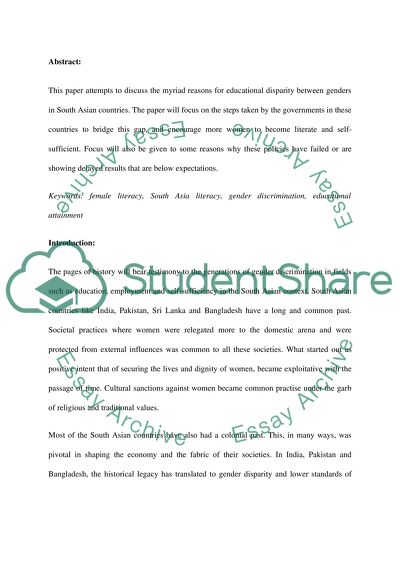Cite this document
(“Gender Discrimination - a Constraint to Educational Attainment in Essay”, n.d.)
Retrieved from https://studentshare.org/social-science/1634836-gender-discrimination-a-constraint-to-educational-attainment-in-south-asia
Retrieved from https://studentshare.org/social-science/1634836-gender-discrimination-a-constraint-to-educational-attainment-in-south-asia
(Gender Discrimination - a Constraint to Educational Attainment in Essay)
https://studentshare.org/social-science/1634836-gender-discrimination-a-constraint-to-educational-attainment-in-south-asia.
https://studentshare.org/social-science/1634836-gender-discrimination-a-constraint-to-educational-attainment-in-south-asia.
“Gender Discrimination - a Constraint to Educational Attainment in Essay”, n.d. https://studentshare.org/social-science/1634836-gender-discrimination-a-constraint-to-educational-attainment-in-south-asia.


